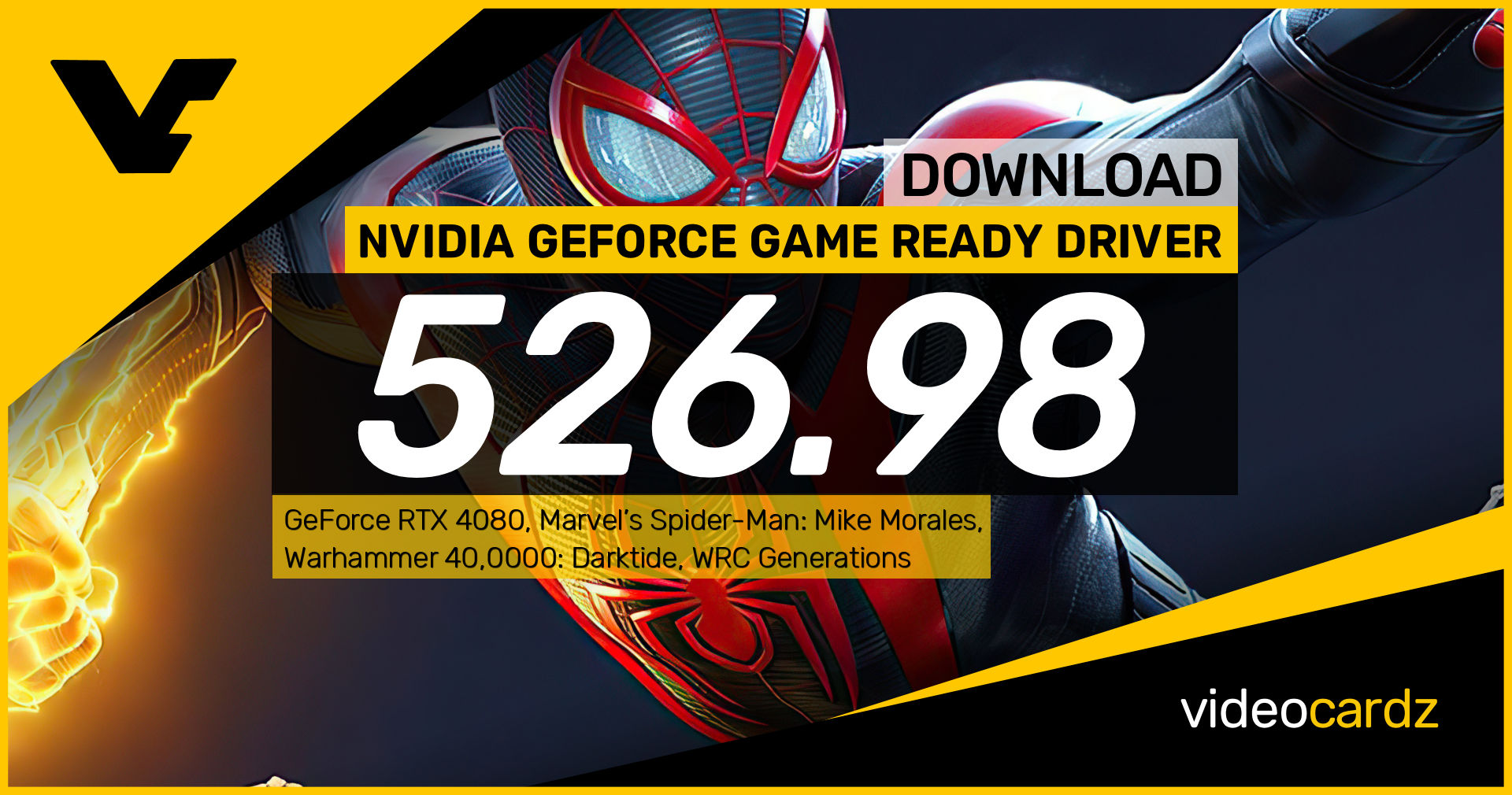DegustatoR
Legend
The game is very heavy on geometry, it is anything but "a mere simple scene".a mere simple scene
Follow along with the video below to see how to install our site as a web app on your home screen.
Note: This feature may not be available in some browsers.
The game is very heavy on geometry, it is anything but "a mere simple scene".a mere simple scene

modern games aside, can't wait to try technology like this to play emulators and run games like Super Mario 64 or Diddy Kong Racing and so on at decent framerates.Tried it in F1 22 the frame rate is capped at 162FPS, VSYNC limit is 170Hz. So around 5% less frames.
DLSS3 now supports V-Sync, in the new driver.
-Introduces DLSS Frame Generation support for VSync when G-SYNC is enabled

NVIDIA GeForce Game Ready 526.98 WHQL - VideoCardz.com
Game Ready This new Game Ready Driver provides the best day-0 gaming experience for the latest new games supporting NVIDIA DLSS 3 technology, including Marvel’s Spider-Man: Miles Morales, Warhammer 40,0000: Darktide, and the new update for WRC Generations – The FIA WRC Official Game...videocardz.com

As mentioned already, Spider-Man: Miles Morales includes support for all the latest and greatest upscaling technologies: DLSS, FSR, XeSS, and the game's own IGTI (Insomnia Games Temporal Injection). Let's be frank: IGTI looks the worst, by far, in our opinion. Since all of the others should deliver superior image quality, we confined our testing to the best option for each GPU — though we tested both DLSS 2 and DLSS 3 (Frame Generation) on the RTX 40-series.
...
DLSS 3 Frame Generation continues to make a huge difference, and it's not just a placebo in my experience. On a 144 Hz monitor, it may not matter too much, but the boost to minimum fps does seem to help. Of course, the base performance (from the CPU) is still at 100 fps or so, which means latency is low enough as to not be particularly noticeable.
...
As for image quality, IGTI does show the greatest loss of detail, especially on the wall textures to the left. The other three upscaling algorithms are all pretty comparable. In motion, DLSS might still have a slight advantage, but all of the modes can make the game fun faster — on the right hardware. Of course we don't have DLSS 3 image comparisons, as the extra Frame Generation content doesn't get properly captured in the usual fashion, but in playing the game I would personally enable the feature on any RTX 40-series card. After all, you paid for the option at the factory!
so, did anything came out of this? with the vsync update, FG is looking more and more compeling for the lower end RTX cards, yet the only ones available are from the previous generationsPossible rumor ...

NVIDIA DLSS 3 "Frame Generation" Lock Reportedly Bypassed, RTX 2070 Gets Double The Frames In Cyberpunk 2077
NVIDIA recently introduced its new DLSS 3 technology that adds a new feature known as Frame Generation on supported GPUs.wccftech.com
Edit:
If true then it would validate the statement made by the Nvidia engineer that FG could work on Ampere and Turing.
NVIDIA Engineer Says DLSS 3 on Older RTX GPUs Could Theoretically Happen, Teases RTX I/O News
It was a random reddit post, with zero proof. 99.99% it was all fake.so, did anything came out of this?
The input lag after turning on DLSS3 has been reduced from 38ms to 27ms.

DLSS is becoming more and more like the AlphaZero or Stockfish of image reconstruction. What do you mean when you say it is much better in comparison with DLSS Quality? Doesn't FG just take care of adding frames rather than reconstruction? Just curious....Played a few hours NFS Unbound and it is a easy win for FG. Game comes with version 1.0.2 so there will artefacts after scene cuts, but you can replace the dll with the one from Miles Morales or Warhammer.
In comparision with DLSS quality it is much better. FSR is no competition. FSR 2 is so bad in this game it is practical useless. And this game is CPU limited with my 13600K, too. So FG goes up to 162FPS without a problem.
After using FG in different games, for me it is another huge advancement for PC players.
DLSS is becoming more and more like the AlphaZero or Stockfish of image reconstruction. What do you mean when you say it is much better in comparison with DLSS Quality? Doesn't FG just take care of adding frames rather than reconstruction? Just curious....
the thing is that a better framerate adds crispness to the image, so yeah, in that sense it's good. When I had a 240Hz monitor, playing games at that framerate added some kind of "natural" AA.In Bright Memory 550 FPS in 1440p and 450 FPS in 3440x1440 are possible.
Upscaling and FG are trying to solve the same problem: Generating more frames.
DLSS super resolution has still a few problems - smearing at high contrast edges, exaggeration of bloom effects, less stable in some games etc. FG is much more stable, has less problem.
Has anyone tried DLSS on ancient 2D graphics? Is it an option for MAME etc?
